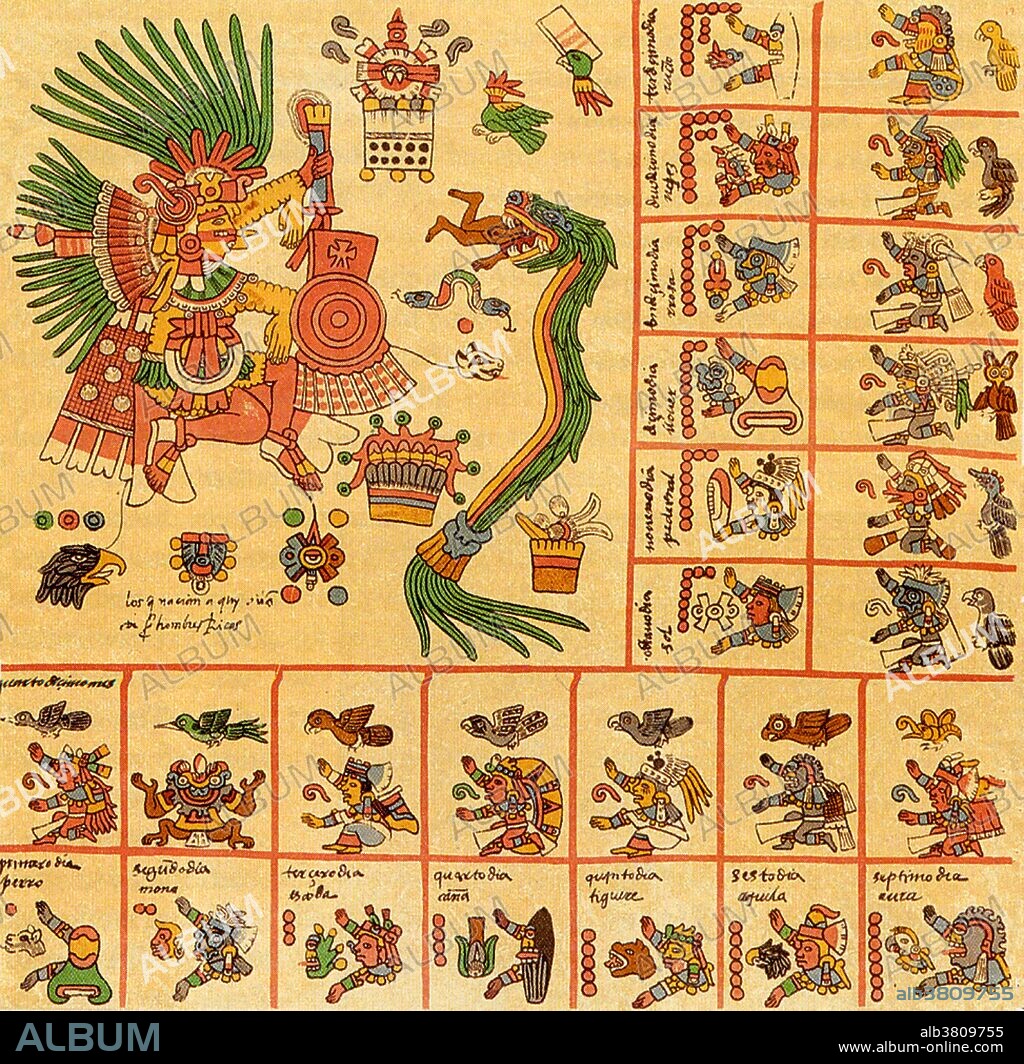alb3809755
Aztec Calendar, Codex Borbonicus, 15th Century

|
Ajouter à une autre Lightbox |
|
Ajouter à une autre Lightbox |



Avez-vous déjà un compte? S'identifier
Vous n'avez pas de compte ? S'inscrire
Acheter cette image

Titre:
Aztec Calendar, Codex Borbonicus, 15th Century
Légende:
Traduction automatique: Calendrier aztèque du Codex Borbonicus écrit par des prêtres aztèques peu avant ou après la conquête espagnole du Mexique. Le Codex Borbonicus est l'un des calendriers divinatoires (ou tonalamatl) les plus complexes qui nous soient parvenus. Chaque page représente l'une des 20 trecena (ou périodes de 13 jours) du tonalpohualli (ou année de 260 jours). La majeure partie de la page est occupée par une peinture de la ou des divinités dirigeantes, le reste étant occupé par les 13 signes de jour de la trecena et 13 autres glyphes et divinités. Avec ces 26 symboles, les prêtres étaient capables de créer des horoscopes et de deviner l'avenir. Les 18 premières pages du codex (tout ce qui reste des 20 pages originales) présentent une usure considérablement plus importante que les dernières sections, ce qui indique très probablement que ces pages étaient consultées plus souvent. Légende originale : Cette Trecena 14 était gouvernée par Xipe Totec et Quetzalcoatl. Chaque panneau de jour comporte un Seigneur du jour, un Seigneur de la nuit et un oiseau augural
Aztex calendar from the Codex Borbonicus written by Aztec priests shortly before or after the Spanish conquest of Mexico. Codex Borbonicus is one of the most intricate surviving divinatory calendars (or tonalamatl). Each page represents one of the 20 trecena (or 13 day periods), in the tonalpohualli (or 260 day year). Most of the page is taken up with a painting of the ruling deity or deities, with the remainder taken up with the 13 day signs of the trecena and 13 other glyphs and deities. With these 26 symbols, the priests were able to create horoscopes and divine the future. The first 18 pages of the codex (all that remain of the original 20) show considerably more wear than the last sections, very likely indicating that these pages were consulted more often. Originally captioned: This Trecena 14 was governed by Xipe Totec and Quetzalcoatl. Each day panel has a Lord of the Day, a Lord of the Night, and an augural bird.
Personnalités:
Crédit:
Album / Science Source / New York Public Library
Autorisations:
Modèle: Non - Propriété: Non
Questions sur les droits?
Questions sur les droits?
Taille de l'image:
3150 x 3111 px | 28.0 MB
Taille d'impression:
26.7 x 26.3 cm | 10.5 x 10.4 in (300 dpi)
Mots clés:
ART, ICONE • AZTEC • CALENDRIER AZTEQUE • CALENDRIER • CÉLÈBRE • CELEBRITE • ICÔNE (ORTHODOXIE) • ICONE • ICONOGRAPHIE • ICÙNE • PEINTURE ICONE • TEMPS CALENDRIER
 Pinterest
Pinterest Twitter
Twitter Facebook
Facebook Copier le lien
Copier le lien Email
Email
